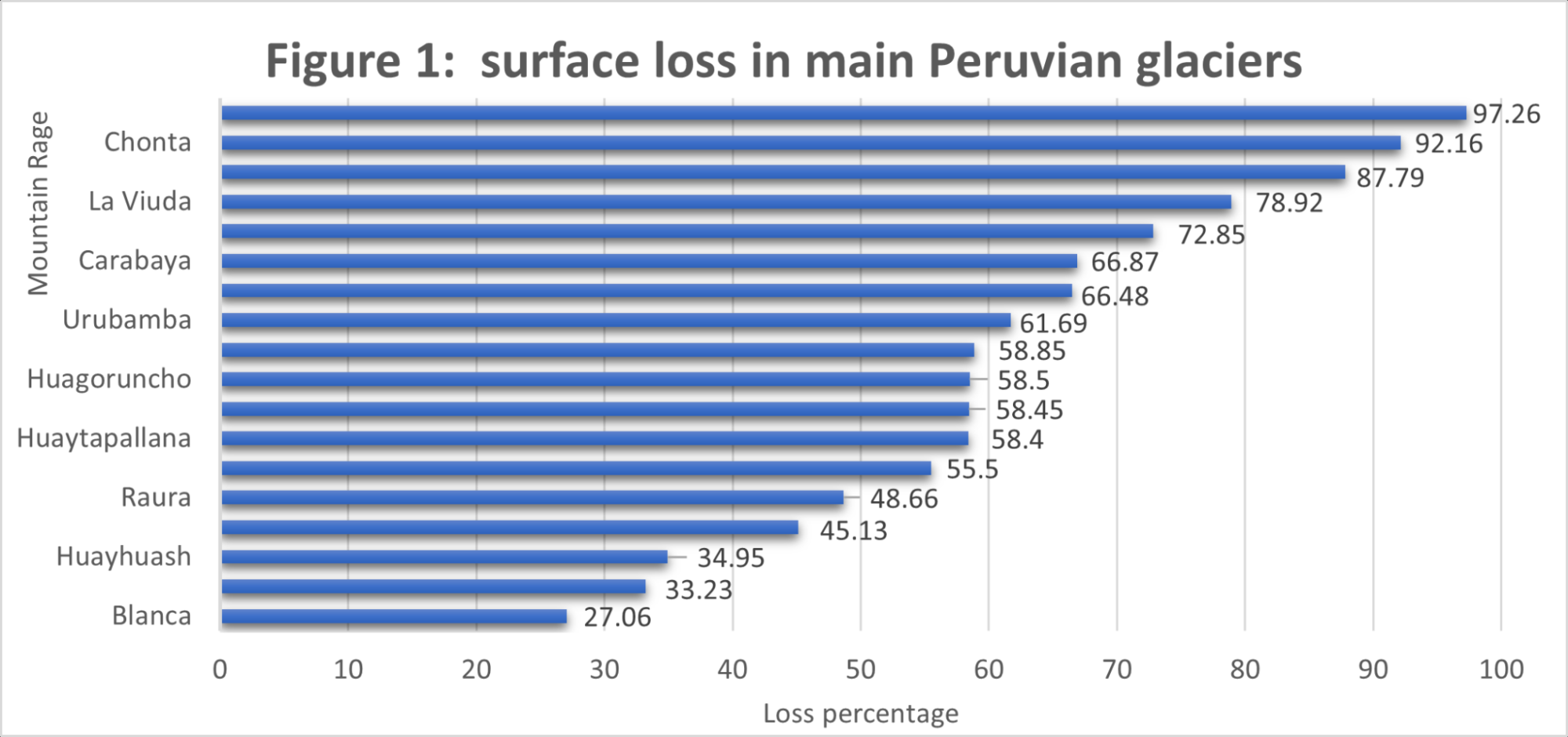The farewell of the glaciers: How global warming is transforming disaster risk in the Peruvian Andes
It is not something that most people have very much in mind, but we are among the last generations that will have the rare privilege of seeing the glaciers in the Andes. The most recent estimates suggest that important Andean glaciers could disappear or recede significantly over the course of the next century; some could lose between 78 and 97 percent of volume in the next 80 years (Schoolmeester et al., 2018; Giménez, 2019). This also happens in other parts of the planet: the Alps already lost 17 percent of their glaciers in the last 20 years (Estivill, 2022); and in the Himalayas and the Hindu Kush, glacial retreat has accelerated 65 percent since 2010 (ICIMOD, 2023). This situation, derived from the warming experienced by the planet after the start of the Industrial Revolution, will have negative implications in the daily life of millions of people, with manifestations that we are just beginning to see and understand. The increase in the occurrence of disasters in the high Andean regions and the alteration of water availability are the challenges that most worry the communities in the upper part of the Cordillera.
The scientific consensus is clear regarding the seriousness of the problem in the Andes, both because of its intensity and its speed. Observed warming in the Peruvian Andes caused, on average, 22 percent of glaciers to be lost in the last 30 years. These losses have differentiated manifestations within the country: the mountain ranges that have lost the most glaciers since the measurements began are La Blanca (169), Huayhuash (66) and Central (45); however, it is those of Chila, Chonta and Huanzo that have lost the most glacier surface (Figure 1). The El Barroso and Volcánica mountain ranges have already completely lost their glaciers (La República, 2022).

In the Peruvian Andes, the crises that may result from this process would have a significant impact on most of the country and would also affect regions located hundreds of kilometers from the Andes. Perpetual snow and glaciers function as water regulators for ecosystems and millions of people who depend on the water that feeds the rivers that drain towards the Amazon and the Pacific; However. Recent estimates point to a six percent reduction in the water that feeds the rivers on the Pacific slope, which could exacerbate the water supply problems already experienced by some regions (CEPLAN, 2023).
In Peru, as in other Andean countries, emergencies associated with ice and snow melting are expected to become more frequent. The Huascarán avalanche, in June 2023, revived the memory of the Yungai tragedy of 1970, where nearly 70,000 people died and nearly 160,000 were injured, leaving the city buried (Montoro, 2023). If the melting and thawing trends continue, the probability of occurrence of ice falls, avalanches, overflow of glacial lagoons, landslides and droughts will increase. These events, in addition to being potentially fatal for the communities that are located along the routes of ice melting, would affect vital infrastructure for the development of these high Andean communities, such as roads, electrical and telecommunications distribution networks, or potable water distribution systems. Similarly, the risk of loss of thousands of hectares devoted to agricultural activities would increase, as has occurred in past events.
Little can be done to reverse snowmelt at the local territorial scale, but much can be done to reduce potential disasters and improve local capacities to coexist with these new disaster risk patterns that are taking shape. In the context of strengthening its National Multi-Hazard Early Warning Network, Peru has begun to take pioneering steps in managing risks associated with glaciers. With the support of a technical cooperation from the Interamerican Development Bank (IADB), the Government of Peru has carried out a pre-investment study for the establishment of an Early Warning System (SAT) for glacial-related hazards, which could mean the difference between life and death for more than 600,000 Peruvians, who are currently exposed to these risks in dozens of communities located in the ejection cones of the glacial basins of the Peruvian Andes. The implementation of the EWS is one of the fundamental steps for the adaptation of these populations at risk and an immediate measure to strengthen the resilience of their economic activities. In a context of the global warming of the planet, the regression of the glaciers is no return path, but there are many paths related to disaster risk management and adaptation to climate change that we can embark on to limit the likelihood of these emerging threats to materialize in tragedies.
